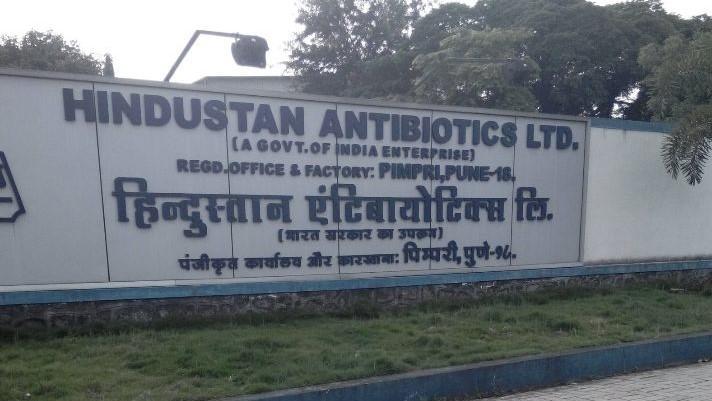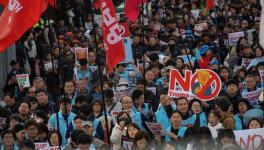Covid-19 Relief Package: Wide Berth to Revival of Health Sector PSUs, Bolstering Infrastructure

Hindustan Antibiotics Limited | Image Courtesy: justdial
The recent announcements by Union Finance Minister Nirmala Sitharaman under the Rs 20 lakh crore package took economists, first by surprise, then by shock. They have stated that this will hardly do any good to the economy, which had already been facing a slowdown before the pandemic brought it to a standstill. But what disappointed experts further was that the minister failed to commit to any budgetary proposal for crumbling health infrastructure of the country.
On the last day of the announcements, she said, “Public expenditure on health will be increased by investing in grassroot health institutions and ramping up health and wellness centres in rural and urban areas. Setting up of Infectious Diseases Hospital Blocks in all districts and strengthening of lab network and surveillance by Integrated Public Health Labs in all districts and block level labs and Public Health Unit to manage pandemics. Further, National Institutional Platform for One Health by ICMR will encourage research. And implementation of National Digital Health Blueprint under the National Digital Health Mission.”
Prior to the announcement, the Centre in April had announced Rs 15,000 crore for Covid-19 emergency response for states and the union territories. Reports suggest that the money will be released in three phases: 1. January 2020 to June 2020, 2. July 2020 to March 2021, and 3. from April 2021 to April 2024. Out of Rs 15,000 crore, Centre would release Rs 7,774 crore for immediate use and Rs 7226 crore for medium term support till 2024. Interestingly, the vague proposal failed to mention a single word about revival of drug-making public sector units which once backed the ambitious programmes for population control, malaria eradication and prevention of dehydration by providing ORS.
The Centre-owned Indian Drugs and Pharmaceuticals Limited (IDPL), Hindustan Antibiotics Limited (HAL), Bengal Chemicals and Pharmaceuticals Limited (BCPL) and other eight subsidiaries were founded in collaboration with state governments. In a Cabinet meeting last year, the government decided to shut down IDPL and its subsidiary Rajasthan Drugs and Pharmaceuticals Limited and put HAL and BCPL on strategic sale. Interestingly, BCPL has turned itself into a profit-making enterprise and has posted profits for three consecutive years. So, its employees have challenged the government in a court and it is still a sub-judice matter. Different reports over time have suggested that the PSUs could have been in better shape if the government would have taken timely decisions regarding cash flow and modernisation.
The government's indifference to drug-making PSUs continued even when it needed them the most. Reports suggest that the government remained clueless if it should order hydroxychloroquine tablets from BPCL despite the statement of its managing director stating it can produce a million tablets in a week. Taking to NewsClick, an employee said, “The government asked us for supply of hydroxychloroquine tablets only after realising that no private sector company was capable of production on such a large scale.”
But the story does not end with tablets alone. Indranil Mukherjee from Jan Swasthya Abhiyan (JSA) suggests that the country’s response to the pandemic was further limited by absence of sound support from drug-making PSUs. He said, “The pandemic proved that it was only the public sector which could deal with such situations even in limited capacity. It was an opportune moment when it should have thought about increasing spending not only on health infrastructure, but also on research. So, let me tell you how it impacted the response. First, the Indian companies are reliant on China for supply of active pharmaceutical ingredients (API). API adds therapeutic value to the medicine. Once China was hit by the pandemic, we became reliant on anything that was available even if it was substandard. Second, we were also dependent for personal protective equipment, testing kits, testing regents and the ventilators. The foreign companies often sell refurbished ventilators at a premium cost and we take them because we have abandoned our PSUs long back. Just look at Kerala or Tamil Nadu; they could initially test more people because their PSUs had their limited stock.”
Mukherjee added, “Making of a solid system needed an ample workforce of doctors, nurses, paramedic workers and ground workers in the form of ANM and Asha workers. Currently, there are 80% vacancies for Asha workers and it urgently needs replenishment. These comprise primary sector infrastructure.”
Also read: India, WHA and the Politics of Pandemic
Get the latest reports & analysis with people's perspective on Protests, movements & deep analytical videos, discussions of the current affairs in your Telegram app. Subscribe to NewsClick's Telegram channel & get Real-Time updates on stories, as they get published on our website.
























